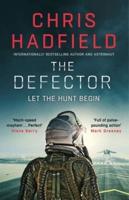Publisher's Synopsis
Queen Anne's Curse is a work of fiction but is based on a number of true life events. The characters of Sir Michael Walker, Geoffrey Hawthorne, Caroline De Winter, Debbie and David Spencer, and Dr Ruth Walker, are based on real people; I have met during my career in both law enforcement and public life. In fact, Sir Michael Walker is a senior psychiatrist at the University of Northern England in the United Kingdom, and the various Hampshire police officers are loosely based on my colleagues who served with me in the last part of the 20th century.
The Mary Rose's sinking is still shrouded in mystery. Although the majority of historians agree that it was bad seamanship. But there's still those who think a more supernatural cause was to blame.
Human remains recovered from the ship have made it possible to reconstruct some of the crew using state of the art computer generated and forensic facial recognition software. One of them was the Archer who, when the ship sank, found himself stuck in a warehouse beneath its decks. The basis for the reconstruction of Mary Rose, which is currently on display at the Portsmouth Ship Museum, was this unknown sailor. Little is known about this man but I have attempted to give him an identity based on a typical Tudor archer of the period, who was aboard the Mary Rose. His story is typical of those who served in Henry's navy in 1545. Many of the historic details of the history trail of the ring depicted in the book are real documented events, such as those surrounding Isadora Strauss, and James Longstreet, and the fire that claimed the lives of some of Joan's descendants. The Queen Anne's Curse is, therefore, a combination of fact and fiction in which sometimes the boundaries are blurred. It's not entirely accidental, though.










